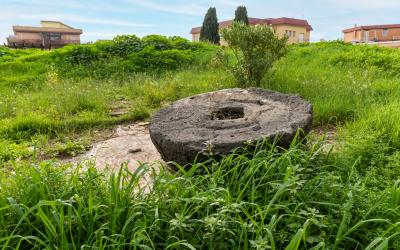A post station between Rome and Civitavecchia
This fortified farmhouse with a rectangular plan is embellished with four crenellated coner towers, from which the nickname Castellaccio probably derives. We are in front of a post station, located along the Via Aurelia Antica, exactly halfway between Rome and Civitavecchia. Shelter, safe point of reference for pilgrims, couriers and travellers who happened to pass through the Aurelia and needed to refresh themselves, sleep or change horses.
In the Odescalchi archive, a document from the 17th century reports the design of the Casale which appears practically as it is now: The front already had a rusticated portal but still without the noble coat of arms; there were few windows. Finally, the towers were all covered in plaster. The ground floor had a single entrance from which the two large wings of the central body branched off and in front the staircase that led to the second floor, the large rear annex did not yet exist and the rooms of the towers were accessible only from the inside.
Throughout the 18th century Monteroni remained in operation under the control of the Odescalchi. During the 19th century, for reasons that are not entirely clear, the building began to gradually decay.
In 1857, with the completion of the deviation of Via Aurelia towards Palo, built to more easily reach the eighteenth-century Posta Vecchia owned by the Odescalchi family, the farmhouse of Monteroni lost the role it had played in the last two centuries and ended up assuming exclusively agricultural functions, used by sharecroppers and tenants as a residence and utility room. By now excessively large for the necessary purposes, it was preferred to divide it intenally into several rooms to make the various parts independent.
Finally, the Castellaccio dei Monteroni in Ladispoli was used as a film set in 1959 by Monicelli for the final part of: The Great War.










